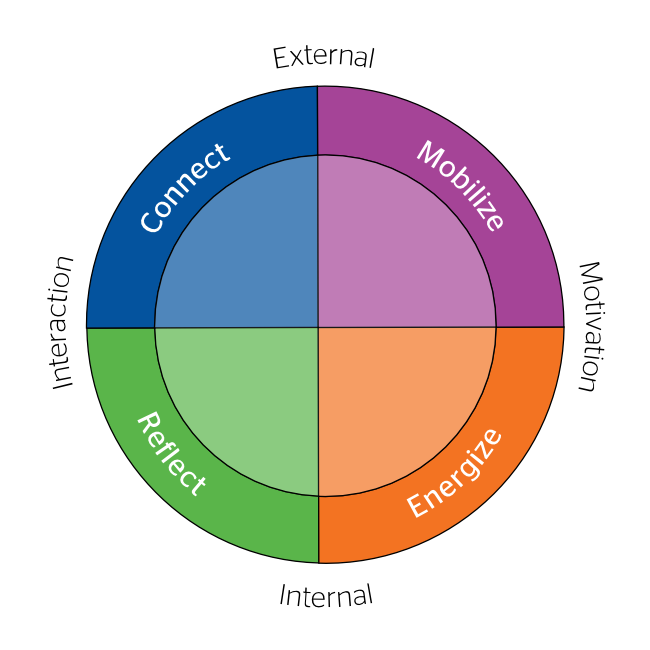Today’s world of leadership is about much more than just managing tasks and results. Leaders need to be able to work with their team on coaching and development in the workplace. They are expected to do much more than assigning tasks, overseeing people, and rating them exactly on what they’ve done. It’s no longer just a matter of telling people what to do and demanding results without taking the time to understand your team.
It’s so important as a leader to be a coach to our employees. This looks like giving them guidance tailored to who they are. It means giving them relevant feedback about where they are and where you see them going. It means honoring and valuing them as an individual, and not lumping all your employees together in a one-size-fits-all approach.
Before we can do any of these things we must first have the skills and tools we need to understand our employees. This is where the tools and guidance we offer at Core Focus Consulting come into play. We can help you to understand your team and then teach your how to use that knowledge for coaching and development in the workplace.
Conflicting Personalities
Here is an example of a challenge that a leader had that we addressed with an understanding of personality traits. The first thing to note is that this leader was a fairly impatient person. They like to get things done. They like to check things off the list, show accomplishment, and move on. Because of this, during one-on-one conversations with his team, the leader would sometimes be tapping his finger, bouncing his foot, or maybe glancing over an email.
The leader had a particular employee on their team whose communication style wasn’t working with the leader’s preferences. Their relationship wasn’t easy, even though this employee was performing well at his job and was liked by others. When they sat down to have meetings, the leader found that the employee liked to spend a lot of time making small talk, discussing personal matters, and relating stories about other co-workers.
The leader felt this was a waste of valuable time, and when these topics came up he would begin to get a little agitated. He wanted to stick to the task at hand and get things done. This method of communicating came off as abrasive to his employee and caused tension during their interactions.
While going through the work that we do with strengths, we identified that this leader has a talent called achiever. An achiever is about getting things done and checked off the list.
This employee, on the other hand, had a talent called Woo. This is an ability to chat and get to know people easily. They are an outgoing conversationalist who enjoys the back and forth of a good discussion.
As you can guess these, two talents were conflicting a bit. The leader wanted to get things done in the most no-nonsense way possible, while the employee wanted to chat a bit during the process.
It’s important to note that one talent or way of doing this isn’t better than another. There is nothing inherently wrong with being an achiever who likes to get straight to the point and there’s nothing wrong with being a person who likes to get things done with a side of conversation and connection. All that really matters is having an understanding of what talents you are combining and how best to allow them to work together.
After I spent time working with them, the employee began to understand that before the leader could relax and engage in any small talk, they first needed to be sure things were on track. We designed a simple coaching form or agenda for the employee fill out before their one on one. It shows what they’re working on, how it’s going, and what they need from the leader. This coaching form is the first thing they talk about in their one-on-ones.
After they had gone through everything on that agenda, they moved on to conversations that were softer and less about work or specific tasks. The leader engaged with the employee in a more personal conversation without distractions or agitation.
Both the leader and the employee felt better. They better understood one another. Their interactions were no longer tense and fueled by irritation. They both felt valued and respected.
The leader was now being a successful coach rather than just a manager. They understand their employee’s talent and desires and are now able to meet them, without having to completely abandon their style or preferences.
The employee is showing respect for the leader’s time and talents by going into their conversations in a prepared and succinct way. This allows them to show off all the great work they are doing, without anything distracting the leader from their accomplishments

Know Your Teams’ Strengths Individually
One of the greatest things about these tools is that you become a more effective leader because you know yourself and you know your team members individually. You can use your unique talents and personalities to your benefit, instead of always working against them. You’ll communicate more effectively with your employees because they’ll know the best way to approach you and you’ll know how they prefer to be approached. You’ll be able to put together people who will work well together and using coaching and development in the workplace to help with any conflicts that come up.
When you have a knowledge of these tools in your arsenal, you’ll be amazed at how well your team can work together. Instead of feeling like you’re clashing with your employees or co-workers, or that there are certain people you just can’t work with, you’ll be able to better understand where they are coming from. You’ll see what their natural tendencies require from their work and from those that they interact with. Before long, you’ll watch your employee’s satisfaction improve because they will feel understood, productive, and valued.
If you’ve ever felt like the leader in the story, or just want to see how this work could help your team, I’d love to talk with you about it. If you’d like more information, you can book a free 15-minute call with me here. Let’s work together to make your team stronger!
